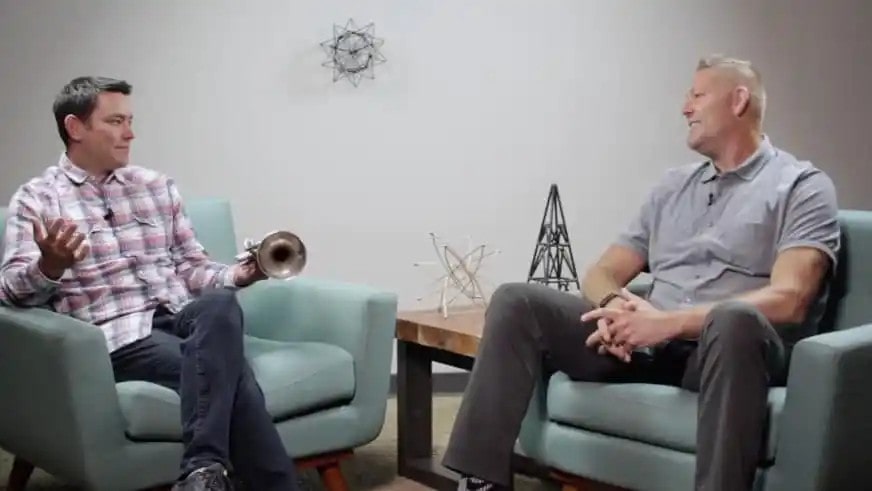Accelerate your Deal Velocity with a Modern Demo Process
Accelerating your deal velocity requires a modern demo process. Read on to learn how you can accelerate your deal velocity with these tips from Bob...

Sales, presales, and client success professionals are routinely confronted with objections, tough questions, and customer concerns. These situations usually do not predominate client engagement, but their appearance may heighten emotion, and how you handle these moments can determine your engagement outcome. Let's go over proven tactics to open up conversations, focus on the root issues, and, ultimately, secure customer confidence. The Fish On™ Framework is one tactical tool to handle objections successfully and keep your meeting on track. With the Fish On™ Framework, you can turn objections into opportunities to understand more clearly what the buyer is looking for and deepen your connection with a prospect.
The Fish On™ Framework is proven to handle objections and is foundational for building business relationships. It consists of two parts that work together to deliver the best possible outcome.
Effective communicators regularly use these tactics to understand emotions, build human connections, and get to the root of needs in a conversation.
Why is developing active listening skills essential to mastering handling objections? To address a sales objection, you need to understand your customer's point of view. Only then can you decide on the appropriate course of action and lead the conversation effectively. There are four different approaches that you can take when it comes to active listening.
Paraphrase
Clarify
Empathize
Validate
The second part of the framework is responding with purpose. Your response should help naturally guide the conversation towards your desired outcome. When faced with objections or tough questions, it's an opportunity to showcase your stakeholder management skills. Responding with purpose may include one of these three response types that correlate to neurological states that the responses evoke.
Paraphrasing confirms understanding of what the customer communicated. It involves reflecting on what you heard by putting it into your own words. You can check if you understood correctly and reassure your customer simultaneously. An example is, "So if I understand you correctly, you are saying that..." then paraphrasing the objection. Be sure to do this is the same tone as the customer used. The customer can then clarify if you missed something or did not capture their message accurately.
Another similar approach involved in active listening is asking a speaker to clarify what you just heard. Clarifying what you think you heard can help you understand the real question or concern behind the initial statement. When you clarify, you may ask, "When you say ______, do you mean ______?" This repetition of what the speaker has said also shows that you were listening and wanted to better understand a point in their objection.
Alternatively, you can respond to the objection by shifting to empathy. Empathizing with the person acknowledges their feelings and uses direct statements such as "I see that you feel ______." By recognizing their emotions and potential frustration, you can create a better space to learn more about their perspective and the objection you are trying to overcome.
The fourth way to respond to someone expressing an objection is to validate their feelings. Validating is another form of acknowledging that their thoughts, assumptions, or emotions are valued and heard. This can look like, "I can understand why you feel _____." Validating feelings is not an agreement but creates an affinity and builds a more positive and productive conversation and outcome.
When you properly understand the position of the other person and have created a space of mutual understanding and acknowledgment, you can gently lead the conversation in a productive direction. This intentional shift is your opportunity to show a customer's deference and respect while handling the objection directly. Here are three ways to lead a conversation, without losing customer trust.
Straight Response (Neocortex)
Defer
Pivot (Limbic)
The Straight Response is the most common type of response when handling objections. It involves answering a simple "yes" or "no" or providing a brief explanation. This type of response is unlikely to cause a big reaction or disrupt the meeting in any way. It is straightforward and to the point.
This also refers to how individuals connect what they already know with new information. Responding directly and clearly to a question or request helps people remember that you addressed their needs while also advancing the conversation. These connections facilitate the conversation and prevent it from being derailed.
The next most common type of response is a deferral. This tactic is often used when you don't know the answer to a question. Sometimes, we may get asked questions that we are not familiar with. In this case, it is common to defer and say something like, "You know what, I'm not exactly sure. Do you mind if I connect with our team and get the answer? I will respond back later this week."
We can also use a deferral as a strategic response. Sometimes, you may know the answer to a question, but answering it may risk the outcome of your meeting. Strategic deferrals might be useful where a use case requires a different point of contact or role to be in the room for the information. In such cases, a strategic response could be, "I think I know the answer to this, but I'd like to check with my internal resources to ensure I give you the most accurate answer possible. Would that be okay with you?" Remember, if you defer the objection, schedule your follow-up immediately. This response gives you control over the meeting and ensures you don't jeopardize your call to action or future steps.
The last potential response is to pivot. Pivoting may be necessary when you need to convince someone who is objecting to your position. In some cases, it may be important to challenge their current opinion or belief and open their mind to the possibility of your solution.
Handling a pivot well can have a significant impact, as everyone in the room will take notice. These types of situations can create pressure in the room, but if you handle it with grace and care and show that you understand where the real objection is coming from, you can achieve a win-win outcome.
To effectively handle a pivot, you need to identify the need to pivot early in the conversation
Handling objections requires practice, and, at times, we may not always achieve the desired outcome we were hoping for. It's important to recognize when it's time to accept an objection and move forward. This enables us to keep control of the conversation and avoid losing our footing. Remember that we should always allow time for a CTA (Call-To-Action) at the end of our call. Managing the conversation helps us stay on track. Leave time to confirm that you addressed the objection and make a decision to ask for a CTA that moves things toward your desired outcome.

Accelerating your deal velocity requires a modern demo process. Read on to learn how you can accelerate your deal velocity with these tips from Bob...

What makes a sales organization powerful? What makes a sales organization effective? How are the biggest and best sales teams meeting goals? The most...

Executive sales conversations are critical for B2B sales engagements, especially larger enterprises. Chad Wilson, 2Win’s VP of Operations, sits down...